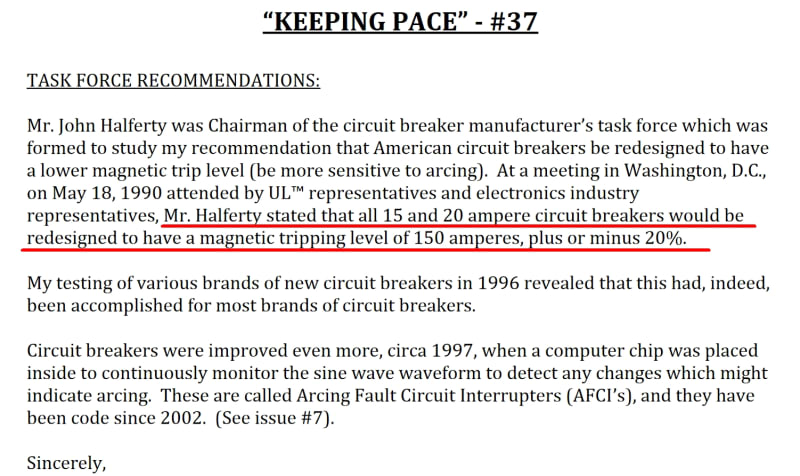Mbrooke
Electrical
- Nov 12, 2012
- 2,546
Does anyone know the 30*C AC resistance (or impedance) of 14, 12 and 10 gauge wire?
Follow along with the video below to see how to install our site as a web app on your home screen.
Note: This feature may not be available in some browsers.
Freddy Nurk said:You know that the 30C temperature referenced is the ambient temperature, not the conductor temperature right?

Canadian Electrical Code said:8-102 Voltage drop (see Appendices B and D)
After reading your post concerning the legal action that the CSA (Authors of the CEC) have instituted in regards to Copyright infringement, I leave it to you to locate a copy of the CEC.
Suffice to say that rule 8-102, Appendix B and Appendix D explain the derivation, purpose and use of Table 68.
The number of codes and reference books piled on your desk is immaterial if the stack does not include a copy of the CEC, when you chose to post false information as to the purpose and use of a table.
Bill
--------------------
Ohm's law
Not just a good idea;
It's the LAW!
Waross said:What about power factor?
You may add pure resistance arithmetically but you cannot add impedances unless the PF or X/R ratios are equal.
You probably think that the current on the neutral must always be the difference between the L1 current and the L2 current in a single phase circuit.
Not so, despite what they teach in high school and trade school, and a lot of text books.
(And this is not a CSA conspiracy.)
While I recognize there’s a world of difference between #10 at 120V and 795 at 115kV, it’s still weird. Yes, I try to get the R component “right” when calculating line parameters, but the industry did just fine for a very long time by introducing a very small error that made the math significantly simpler, setting Z = X, letting R = 0. The difference between a line angle of 90 and a line angle of 80 is really small. Read Blackburn, the math is all based on Z = X. Close enough.
Sure, that wimpy wire stuff is different, but X still matters, even if no longer overwhelmingly dominate. How exactly is the given spacing between phase and neutral maintained? If you know R to a tenth of a percent but X is still +/- 2.5% have you gained much?
So you are going to add the X of the transformer to the R of the circuit.Mbrooke said:I'd like to make a table that can be placed into NFPA-70 where the serving transformer, service drop and service conductors are converted into simple ohm values which can be added together by anyone then used to divide +6% of the nominal voltage to obtain the maximum short circuit current at the service disconnecting means. This must be based on a 30*C conductor impedance at most.
